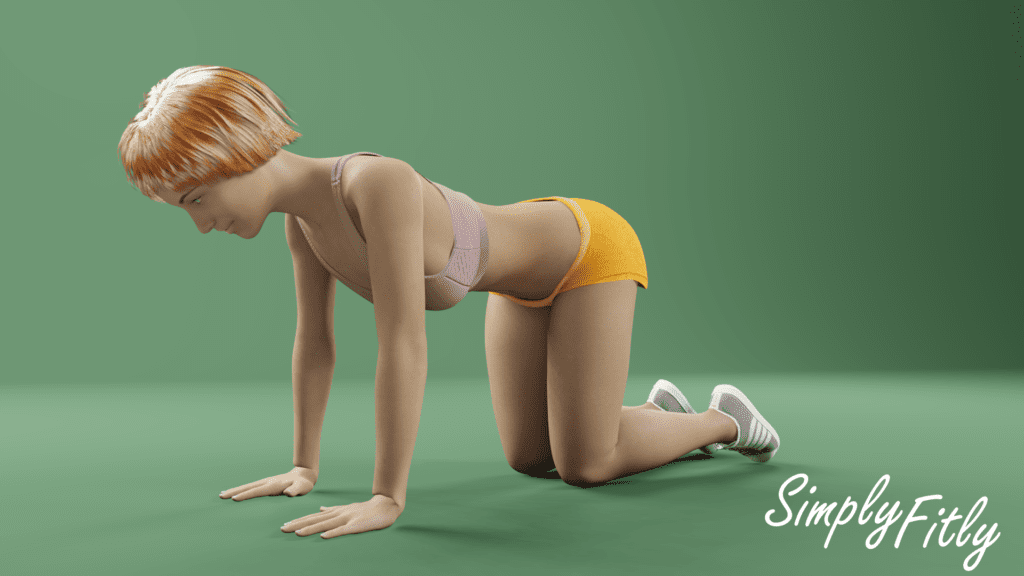
Muscle group: lower body (glutes, hips); core.
Intensity: moderate.
Directions
- Begin on all fours with hands directly under shoulders and knees under hips. Ensure your spine is in a neutral position, and engage your core muscles.
- Keeping right knee bent at a 90-degree angle, lift it out to the side.
- Lift your knee at a 45-dergee angle or as high as you comfortably can without rotating your hips or arching your lower back. Keep your pelvis stable and avoid twisting your torso during the movement.
- Slowly lower your right knee back down to the starting position.
- Repeat the exercise on the opposite side, lifting your left knee out to the side while keeping the 90-degree angle.
- Continue alternating between right and left legs for the desired number of repetitions or time.


Modifications: you may start with raising the leg just slightly off the ground, instead of aiming to a 45-degree angle straightaway. Also, you can choose between two methods of performing Fire Hydrants: alternate legs after each rep (for improved coordination and balance), or do multiple reps on one leg before switching (for better muscle engagement and development of each leg).
Mistakes
- Arching the lower back: Avoid arching your lower back by engaging core muscles and keeping your spine in a neutral position. Focus on stabilizing your pelvis throughout the movement.
- Lifting the leg too high: While it’s essential to lift your leg to the side, avoid raising it excessively high, which may compromise your stability and form. Aim to maintain control and a 90-degree angle at the knee.
- Swinging the leg: Perform the movement in a controlled manner, avoiding any swinging or momentum that can diminish the effectiveness of the exercise.
- Holding your breath: Remember to breathe naturally throughout the exercise. Inhale and exhale with each repetition to maintain proper oxygen flow and support your muscles.
- Not engaging the core: Ensure you engage your core muscles throughout the entire exercise to support your lower back and maintain stability.
Conclusion
Fire hydrants target the hip abductors, which play a crucial role in hip stability, balance, and lateral movements. Strengthening these muscles can enhance overall lower body strength.
The exercise also engages the core muscles to stabilize the pelvis and spine during the movement, contributing to improved core strength and stability.
Performing fire hydrants can enhance hip flexibility and mobility, reducing the risk of tight hips and improving overall range of motion.
Overall, fire hydrants can be a valuable addition to both general fitness routines and circuit training. They help improve lower body strength, hip stability, and core activation while offering flexibility and adaptability to various workout styles and fitness levels.